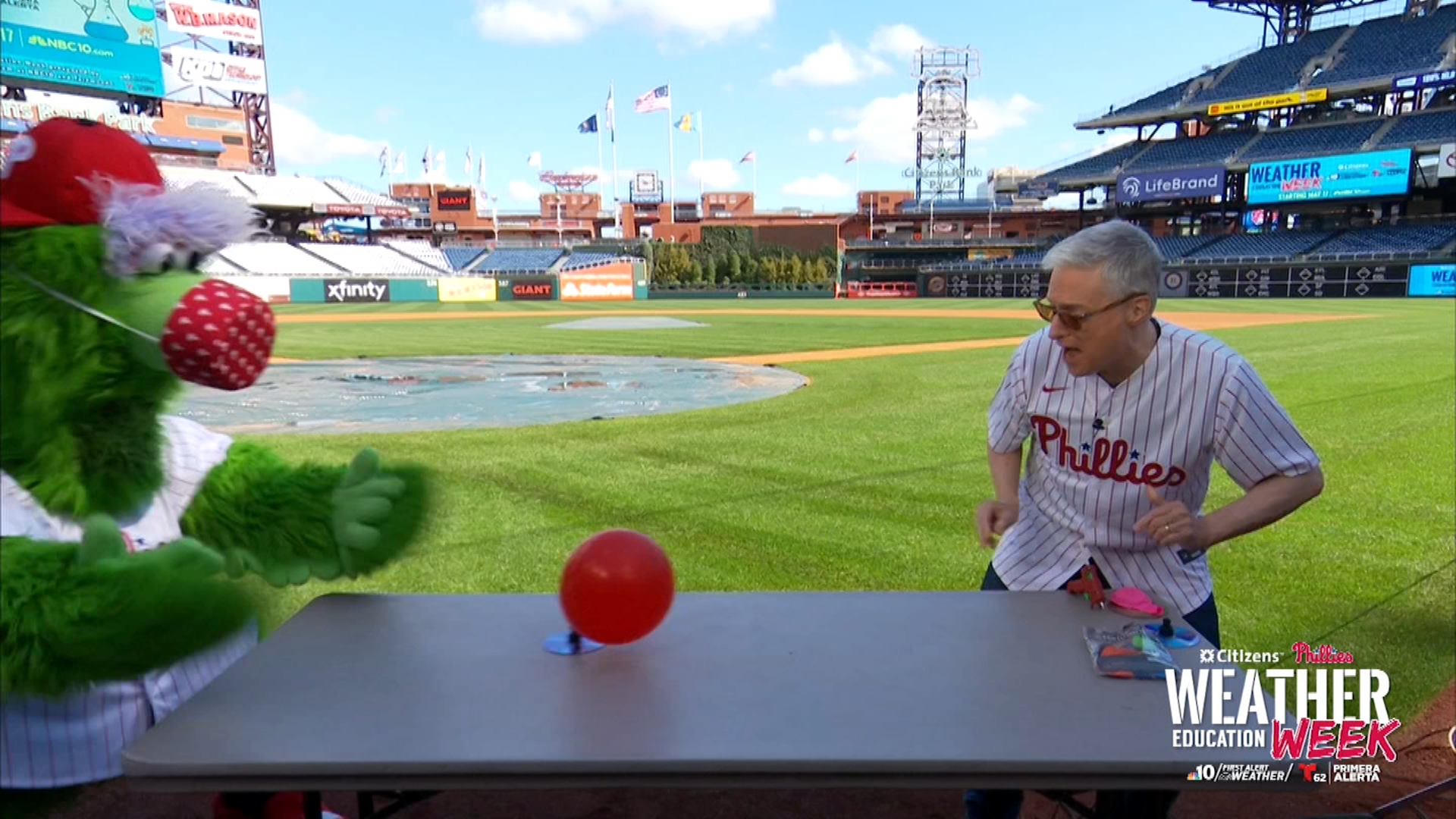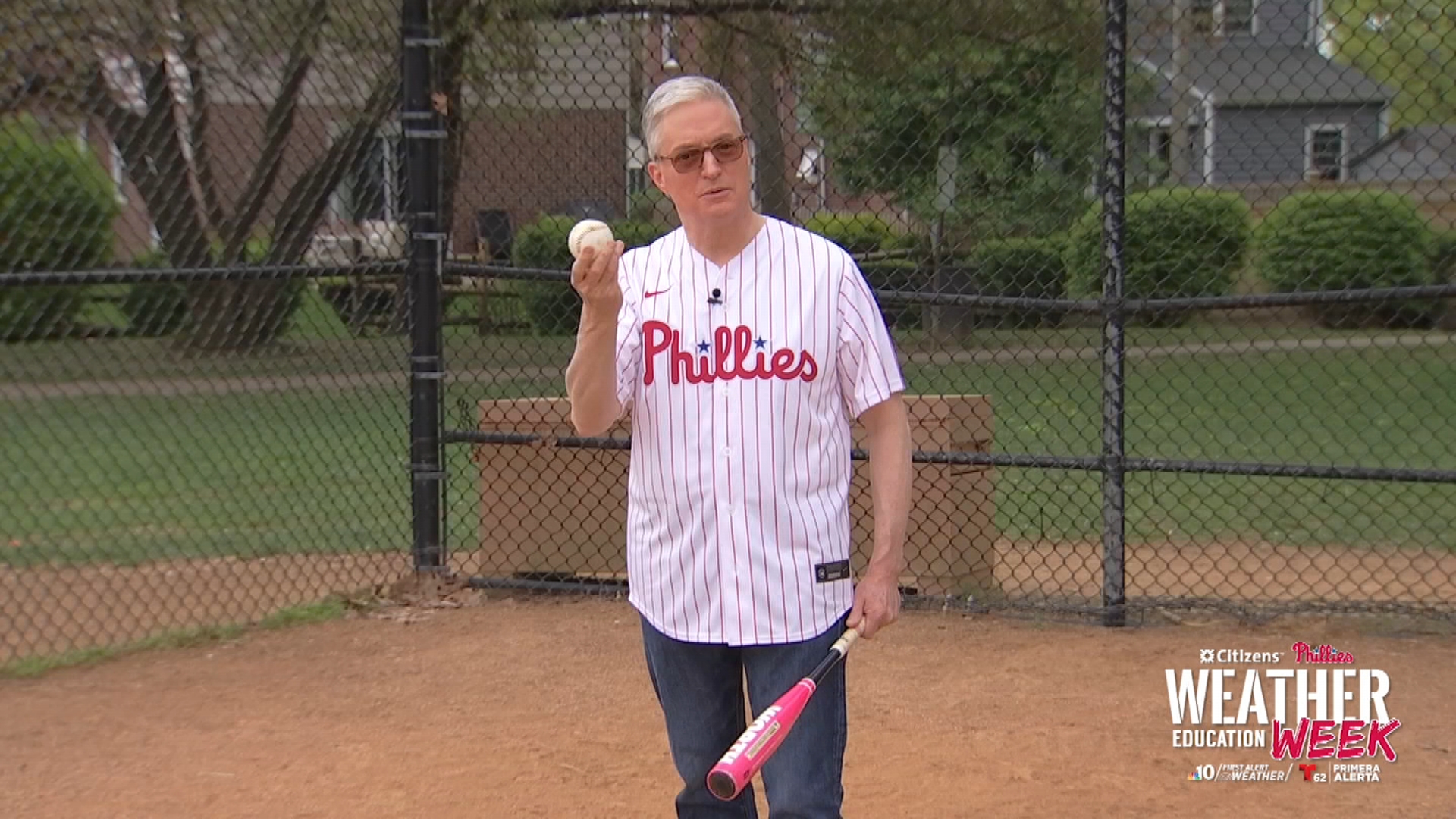Need:
- 1 Compact Fluorescent Light Bulb
- 1 Balloon
- 1 Wool Sock
Steps:
- Blow up your balloon.
- Take the balloon and rub a wool sock quickly against the balloon. Instead of the wool sock, you can quickly rub the balloon against the top of your head or someone else’s head against their hair. You’re charging your balloon!
- Turn off the lights in the room you’re in. You want to be somewhere that can get very dark.
- Bring the bulb close to the balloon. Slightly move the balloon around.
- Did you see it? The bulb should lightly flash on and off.
- If you didn’t see a flash, try charging your balloon for a longer time with the sock or your hair. Then repeat steps 3-4.
Get Philly local news, weather forecasts, sports and entertainment stories to your inbox. Sign up for NBC Philadelphia newsletters.
What Happened?
You lit the light bulb in a manner similar to how clouds create lightning! Nature likes for conditions to be balanced; it likes positive (protons) and negative (electrons) charges to be able to mix and equalize.
In this experiment, by rubbing the balloon on the wool sock or against the top of your head, you were creating an excess of negative charge (electrons). This is called static electricity.
Because nature seeks balance, the balloon does not want to maintain the additional negative charge! It wants to get rid of it.
So, when you put the light bulb close to the balloon, the static electricity moves toward the bulb. At the same time, the pull of the static electricity attracts the negative charge inside the light bulb.
This creates a small electrical current. Finally, the negative charge jumps from the balloon to the bulb, discharging the electrons.
This experiment only works with a compact fluorescent bulb because they contain a gas inside the tube of the bulb. When the electrons already inside the bulb are attracted toward the balloon, they may trigger the gas to glow and reflect inside the light bulb dimly. With the transfer of electrons from the balloon, the gas can trigger a slightly brighter spark of light.
Lightning also follows the law of balance that caused our bulb to light up. When thunderstorms develop, the molecules in the cloud bounce off each other and build up a large charge.
The positive charge commonly rises to the tops of the clouds, while the negative charge sits on the bottom of the cloud, closest to us. Nature wants to balance, or to release this charge.
Air acts as an insulator, or protective barrier from the charge. However, sometimes, the negative charge becomes too strong. As a result, lightning is born.
The negative charge sends a bolt (an electrical current) down to the positively charged ground, striking things like powerlines or trees sometimes in the process.
This can be dangerous! Lightning strikes the closest thing to the clouds, so taller trees or people in an open field will be the first conductor for the lightning to touch and release charge. As a result, during thunderstorms, we always recommend you stay indoors where you’re safer from lightning.
Did you try the experiment? We'd love to see a video! Parents, you can upload a video by clicking here. Make sure to include the names of the participants and your home town.
Or, if you are comfortable doing so, post your video on Instagram or Twitter with #WxEdWeek and tag @nbcphiladelphia.
And check back each day at 10 a.m. and 2 p.m. for new experiments during Weather Education Week @ Home! See all our experiments and coverage here.



